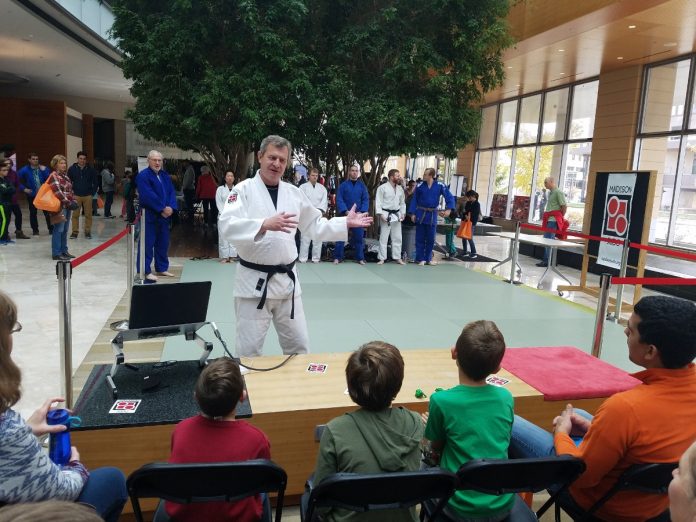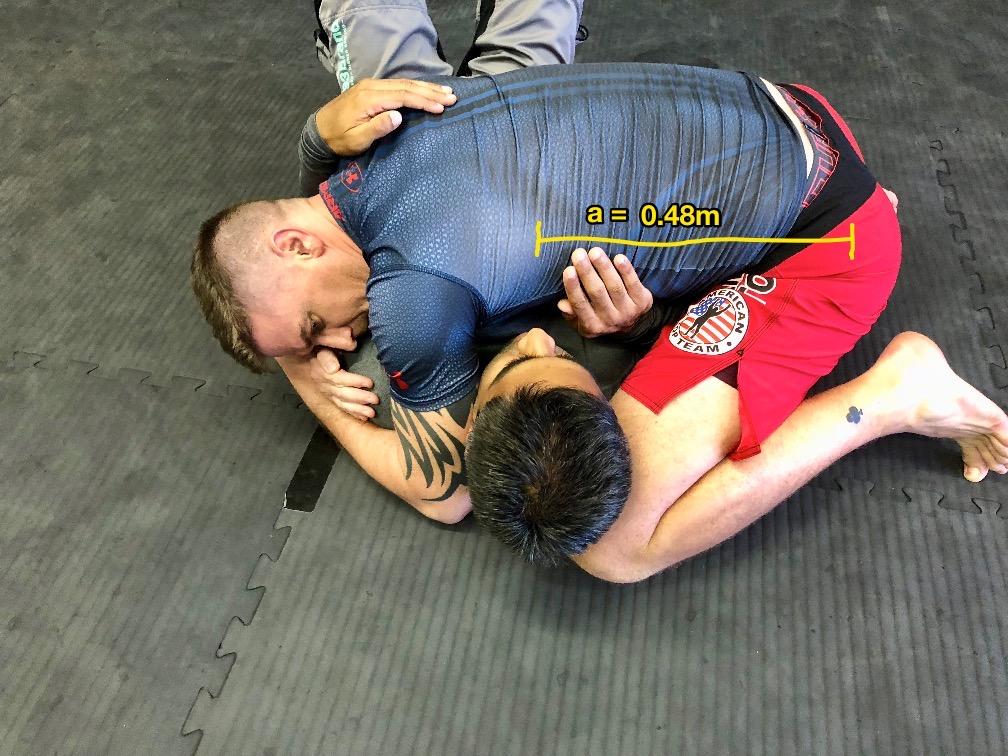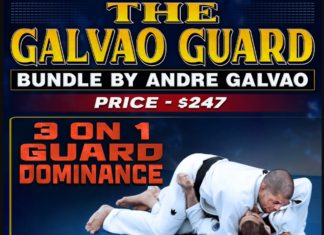
When we say Brazilian Jiu-Jitsu is a martial art, it doesn’t just mean it is an art form, and nothing else. It is obvious from the sport aspect of things that BJJ Is a lot different than stuff like Aikido, where the philosophy of energy and stuff like that is in the focus. Instead, BJJ is way more realistic, and highly affected by different laws of nature, be it the laws of physics or psychological theories. That brings us to BJJ science: what is it that makes Jiu-Jitsu tick, from the standpoint of science and logical thinking, rather than that of BJJ as an art form.
BJJ science might not sound like something you’d really use to explain aspects of the sport, but it does make a lot of sense, once you stop and think about it. From leverage to power, from figuring out solutions to trying to make the best out of unpredictable situations, we’re bound by laws and hypotheses that are deeply rooted in science. Factoring these laws into the equation of grappling, whether it is rolling or competing, will make a huge difference in anyone’s BJJ game.
BJJ Science Class
How do you go about figuring out BJJ science? You don’t have to be a scientist by trait to understand some of the most fundamental laws that are behind Brazilian Jiu-Jitsu. It does extend past just the concept of lever and fulcrum, which just about everyone knows is at the core of most martial arts. However, that does not mean you need to solve complex equations and do scientific breakthroughs. It just means that you need to recognize where science really helps you with your BJJ.

I personally think science references should be a part of every BJJ class. They help us understand what is going on much better, and people do respond well if you use everyday examples to explain why things work. A BJJ science class doesn’t have to be boring like science in school (for those that didn’t love it). It is easy to tell people how to strangle others and break limbs when you can explain it in terms that are universally true for everything and everyone.
The Laws Of Jiu-Jitsu
BJJ science is bound by just about every possible law and theory that applies to every living thing. While everyone that trains are individually different, and adjustments are important, the underlying principles of the laws of Jiu-Jitsu apply across the board. That is why they are laws. In those terms, physics laws dominate Jiu-Jitsu, where all we do is manipulate people’s bodies against their will and against resistance. However, other aspects of science that go much deeper than just what we see help us make our grappling even better.
Inertia
Everyone knows the law of inertia. It has to do with Newton’s first law of motion – objects tend to “keep on doing what they’re doing.” This is a simplified version of events, though, but a very important one at that. If we take sweeps as examples, inertia plays a much bigger role than we think, especially with people that are larger than their opponent. For example, doing the sit-up sweep from closed guard means that a person has started moving their weight through the air before they met another persons’ body, which is in a static position. Since the mass of the object moving is bigger, when the two join, the static mass will head in the direction the dynamic one was already heading into.
The same concept of inertia explains why the person sweeping will end up on top – he is being pulled by the inertia of the falling person. This is before I even mention takedowns and how you can apply the concept there.
Gravity

The reason you want to be on top is that you have gravity working for you both by making it difficult for the bottom person to get off the ground, and easy for you to be on top of them, as your body is trying to get to the ground anyway. In other words, you can forget about pressure passing without the help of gravity.
Murphy’s Law
The one law everyone knows, and nobody can explain. The premise is that anything that can go wrong will go wrong. Although not one of the empirical laws of science, Murphy’s law emerged (most likely) when an aerospace engineer called Edward Murphy couldn’t make his devices work. In grappling, this usually has to do with injuries. You can go about rolling wild for months and nothing happens, and then, a couple of days before a really important tournament, light rolling with your partner, another coupe rolling will fall on you and injure you seriously. For me, it was breaking a toe two days before my wedding. Suffice to say, dancing at the wedding was no fun.
Occam’s Razor
Occam’s razor is a philosophical principle that is actually tailor-made for Brazilian Jiu-Jitsu, especially in modern times. As such, it is a big part of the BJJ science that makes things actually work. The idea is that the simplest solution to a given problem is usually the correct one. In a world where complicating things is becoming a given, trying to solve complex positions, escapes, attacks, transitions, etc. by applying this principle will provide you with a lot of success in grappling. Try solving a lapel guard, for example, or a very deep leg lock by defending in a way more complex than the attack itself. Now, try and do the most obvious thing that comes to mind. You’re welcome.
Theory Of Relativity

Final Thoughts
BJJ science is a fun way of trying to figure out the puzzles Jiu-Jitsu has in store for us. While the principles are the same all over, there’s always something new to discover by using them, as we go deeper and deeper into the BJJ world. While some of the laws above are philosophical, or even slightly satiric in nature, they still apply perfectly to BJJ and are key in progressing through the ranks and becoming a better overall grappler.


![Darce Choke Encyclopedia – Origins, Mechanics and Variations [2025] BJJ, choke, Brabo, BJJ Darce Choke, D'arce Choke, Darce BJJ Choke](https://bjj-world.com/wp-content/uploads/2017/11/JungPoirierLeeYahoo-218x150.jpg)









![Slicin’ Calves Mikey Musumeci DVD Review [2025] Slicin' Calves Mikey Musumeci DVD Review](https://bjj-world.com/wp-content/uploads/2025/04/slicin-calves-mikey-musumeci-dvd-review-218x150.png)
![Jiu-Jitsu For Old Guys Guard Retention Bernardo Faria DVD Review [2025] Jiu-Jitsu For Old Guys Guard Retention Bernardo Faria DVD Review](https://bjj-world.com/wp-content/uploads/2025/03/old-guys-guard-retention-bernardo-faria-dvd-review-218x150.png)
![X-Guard Trickery Kyle Sleeman DVD Review [2025] X-Guard Trickery Kyle Sleeman DVD Review](https://bjj-world.com/wp-content/uploads/2025/03/x-guard-trickery-kyle-sleeman-dvd-review-218x150.png)
![Countering with Crab Ride Anthony Budion DVD Review [2025] Countering with Crab Ride Anthony Budion DVD Review](https://bjj-world.com/wp-content/uploads/2025/03/countering-with-crab-ride-anthony-budion-dvd-review-218x150.png)
![Closet Closed Guard Craig Jones DVD Review [2025] Closet Closed Guard Craig Jones DVD Review](https://bjj-world.com/wp-content/uploads/2025/03/closet-closed-guard-craig-jones-dvd-review-218x150.png)
![Xanadu Back Takes Levi Jones-Leary DVD Review [2025] Xanadu Back Takes Levi Jones-Leary DVD Review](https://bjj-world.com/wp-content/uploads/2025/03/xanadu-back-takes-levi-jones-leary-dvd-review-218x150.png)


![360 Degrees Guard Retention Thiago Abud DVD Review [2024] 360 Degrees Guard Retention Thiago Abud DVD Review](https://bjj-world.com/wp-content/uploads/2024/10/360-degrees-guard-retention-thiago-abud-dvd-review-100x70.png)

![Two Sides One Game Sweep and Pass Marcos Tinoco DVD Review [2024] Two Sides One Game Sweep and Pass Marcos Tinoco DVD Review](https://bjj-world.com/wp-content/uploads/2024/11/sweep-and-pass-marcos-tinoco-dvd-review-100x70.png)


![Roger Gracie Guard Passing System DVD Review [2025] Roger Gracie Guard Passing System DVD Review](https://bjj-world.com/wp-content/uploads/2025/02/roger-gracie-guard-passing-system-dvd-review-100x70.png)
![Arm Bar It All Shawn Melanson DVD Review [2025] Arm Bar It All Shawn Melanson DVD Review](https://bjj-world.com/wp-content/uploads/2025/03/arm-bar-it-all-shawn-melanson-dvd-review-100x70.png)
![Trip Throw Dilemma Michael Pixley and Heath Pedigo DVD Review [2024] Trip Throw Dilemma Michael Pixley and Heath Pedigo DVD Review](https://bjj-world.com/wp-content/uploads/2024/10/trip-throw-dilemma-michael-pixley-dvd-review-100x70.png)
![The Rack Kyle Watson BJJ DVD Review [2025] The Rack Kyle Watson BJJ DVD Review](https://bjj-world.com/wp-content/uploads/2024/12/the-rack-kyle-watson-bjj-dvd-review-100x70.png)
![Feet Finder Foot Sweeps Christian Ozbek DVD Review [2024] Feet Finder Foot Sweeps Christian Ozbek DVD Review](https://bjj-world.com/wp-content/uploads/2024/09/feet-finder-foot-sweeps-christian-ozbek-dvd-review-100x70.png)
![Mastering The Crucifix Alexandre Pereira DVD Review [2025] Mastering The Crucifix Alexandre Pereira DVD Review](https://bjj-world.com/wp-content/uploads/2025/01/mastering-the-crucifix-alexandre-pereira-dvd-review-100x70.png)

![X-Guard Trickery Kyle Sleeman DVD Review [2025] X-Guard Trickery Kyle Sleeman DVD Review](https://bjj-world.com/wp-content/uploads/2025/03/x-guard-trickery-kyle-sleeman-dvd-review-100x70.png)

![Xanadu Back Takes Levi Jones-Leary DVD Review [2025] Xanadu Back Takes Levi Jones-Leary DVD Review](https://bjj-world.com/wp-content/uploads/2025/03/xanadu-back-takes-levi-jones-leary-dvd-review-100x70.png)


![Leg Locks From Beginner To Advanced Dan Manasoiu DVD Review [2024] Leg Locks From Beginner To Advanced Dan Manasoiu DVD Review](https://bjj-world.com/wp-content/uploads/2024/12/leg-locks-from-beginner-to-advanced-dan-manasoiu-dvd-review-100x70.png)
![Collar Sleeve Guard Mikey Musumeci DVD Review [2024] Collar Sleeve Guard Mikey Musumeci DVD Review](https://bjj-world.com/wp-content/uploads/2024/12/collar-sleeve-guard-mikey-musumeci-dvd-review-100x70.png)





![Back Hacks Yigit Haney BJJ DVD Review [2025] Back Hacks Yigit Haney BJJ DVD Review](https://bjj-world.com/wp-content/uploads/2024/12/back-hacks-yigit-haney-bjj-dvd-review-100x70.png)